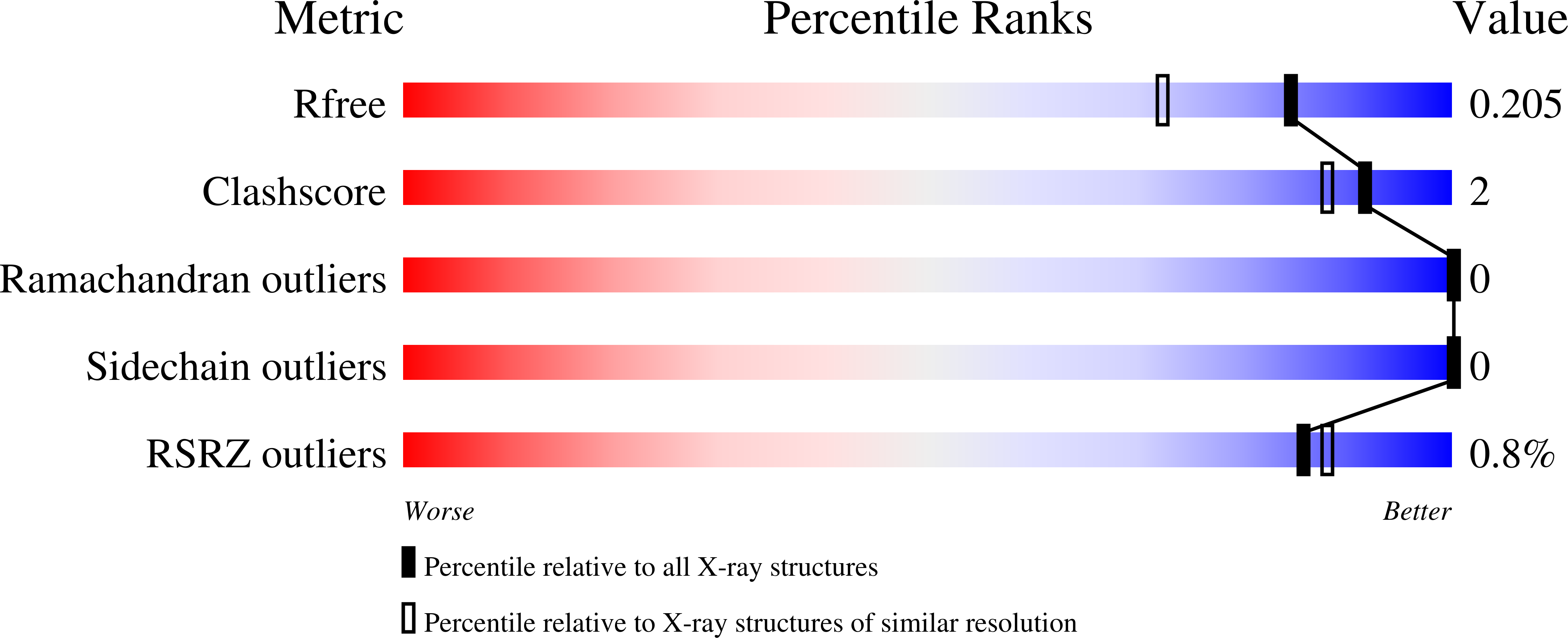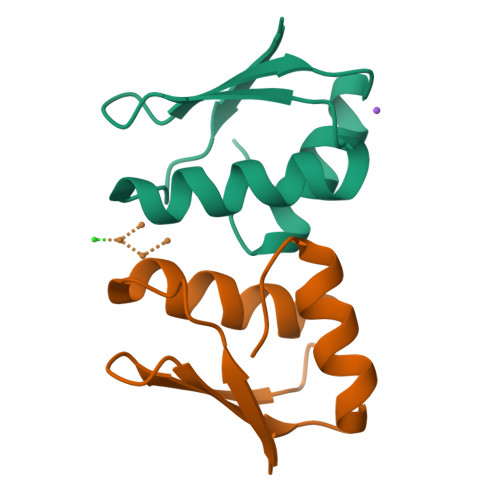Visualizing the Metal-Binding Versatility of Copper Trafficking Sites .
Badarau, A., Firbank, S.J., Mccarthy, A.A., Banfield, M.J., Dennison, C.(2010) Biochemistry 49: 7798
- PubMed: 20726513
- DOI: https://doi.org/10.1021/bi101064w
- Primary Citation of Related Structures:
2XMJ, 2XMK, 2XMM, 2XMT, 2XMU, 2XMV, 2XMW - PubMed Abstract:
Molecular systems have evolved to permit the safe delivery of copper. Despite extensive studies, many copper site structures involved in copper homeostasis, even for the well-studied metallochaperone Atx1, remain unresolved. Cyanobacteria import copper to their thylakoid compartments for use in photosynthesis and respiration and possess an Atx1 that we show can adopt multiple oligomeric states when metalated, capable of binding up to four copper ions. Two-copper- and four-copper-loaded dimers exist in solution at low micromolar concentrations, and head-to-head and side-to-side arrangements, respectively, can be crystallized, with the latter binding a [Cu(4){mu(2)-S(gamma)(Cys)}(4)Cl(2)](2-) cluster. The His61Tyr mutation on loop 5 weakens head-to-head dimerization, yet a side-to-side dimer binding a similar cluster as in the wild-type protein, but with phenolate coordination, is present. The cognate metal-binding domains (MBDs) of the P-type ATPases CtaA and PacS, which are proposed to donate copper to and accept copper from Atx1, respectively, are monomeric in the presence of copper. The structure of the MBD of Cu(I)-PacS shows a crystallographic trimer arrangement around a [Cu(3){mu(2)-S(gamma)(Cys)}(3){S(gamma)(Cys)}(3)](2-) cluster that is very similar to that found for an alternate form of the His61Tyr Atx1 mutant. Copper transfer from the MBD of CtaA to Atx1 is favorable, but delivery from Atx1 to the MBD of PacS is strongly dependent upon the dimeric form of Atx1. A copper-induced switch in Atx1 dimer structure may have a regulatory role with cluster formation helping to buffer copper.
Organizational Affiliation:
Institute for Cell and Molecular Biosciences, Medical School, Newcastle University, Newcastle upon Tyne NE2 4HH, UK.





















